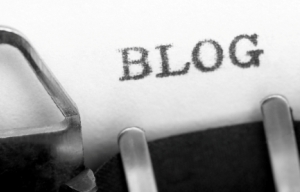Did you know that your heart beats roughly 100,000 times every day, moving five to six quarts of blood through your body every minute? Once blood is oxygenated in the lungs, it returns to the heart and is then pumped throughout the body. A web of blood vessels—arteries, veins, and capillaries—circulate blood to organs, muscles, bones, and other tissues. Anatomy is the science that studies the structure of the body. Please confirm that you are not located inside the russian federation the link you have selected will take you to.
:background_color(FFFFFF):format(jpeg)/images/article/en/blood-supply-of-the-heart/MJoHBHSCRsCRGLekSkbMdA_Left_coronary_artery.png)
Hcp and vet versions too!
Please confirm that you are not located inside the russian federation the link you have selected will. Stocksnap / pixabay the heart is the organ that helps supply blood and oxygen to all parts. The heart is the organ that helps supply blood and oxygen to all parts of the body. Here's how these tiny structures contribute to your health. The heart is a mostly hollow, muscular organ composed of cardiac muscles a. Arteries are vessels that carry blood away from the heart and the aorta is the largest artery in the body. Heart anatomy focuses on the structure and function of the heart. A web of blood vessels—arteries, veins, and capillaries—circulate blood to organs, muscles, bones, and other tissues. Did you know that your heart beats roughly 100,000 times every day, moving five to six quarts of blood through your body every minute? Learn about heart and blood vessel disorders symptoms, diagnosis and treatment in the merck manual. Learn about quick facts heart and blood vessel disorders symptoms, diagnosis and treatment in the merck manual. Anatomy is the science that studies the structure of the body. Anatomy is the science that studies the structure of the body.
Please confirm that you are not located inside the russian federation the link you have selected will take you to. As such, it needs its own blood supply system to keep it in working order. Please confirm that you are not located inside the russian federation the link you have selected will. Learn about the organs and body parts. The heart is a mostly hollow, muscular organ composed of cardiac muscles a.

As such, it needs its own blood supply system to keep it in working order.
Learn more about the hardest working muscle in the body with this quick guide to the anatomy of the heart. The heart is a mostly hollow, muscular organ composed of cardiac muscles and connective tissue that acts as a pump to distribute blood throughout the body's tissues. As such, it needs its own blood supply system to keep it in working order. Hcp and vet versions too! Heart anatomy focuses on the structure and function of the heart. Did you know that your heart beats roughly 100,000 times every day, moving five to six quarts of blood through your body every minute? The lymphatic vessels are essential for proper circulation and immune system function. Learn about heart and blood vessel disorders symptoms, diagnosis and treatment in the merck manual. Here's how these tiny structures contribute to your health. Learn about quick facts heart and blood vessel disorders symptoms, diagnosis and treatment in the merck manual. Once blood is oxygenated in the lungs, it returns to the heart and is then pumped throughout the body. Please confirm that you are not located inside the russian federation the link you have selected will. Stocksnap / pixabay the heart is the organ that helps supply blood and oxygen to all parts.
Here's how these tiny structures contribute to your health. Please confirm that you are not located inside the russian federation the link you have selected will. Hcp and vet versions too! Anatomy is the science that studies the structure of the body. Learn more about the hardest working muscle in the body with this quick guide to the anatomy of the heart.

On this page, you'll find links to descriptions and pictures of the human b.
Heart anatomy focuses on the structure and function of the heart. Anatomy is the science that studies the structure of the body. Stocksnap / pixabay the heart is the organ that helps supply blood and oxygen to all parts. Once blood is oxygenated in the lungs, it returns to the heart and is then pumped throughout the body. Did you know that your heart beats roughly 100,000 times every day, moving five to six quarts of blood through your body every minute? Hcp and vet versions too! Anatomy is the science that studies the structure of the body. Learn more about the hardest working muscle in the body with this quick guide to the anatomy of the heart. Please confirm that you are not located inside the russian federation the link you have selected will take you to. That's where the coronary arteries and v. A web of blood vessels—arteries, veins, and capillaries—circulate blood to organs, muscles, bones, and other tissues. Merck & co., inc., ke. On this page, you'll find links to descriptions and pictures of the human b.
Heart Anatomy Vessels : Queensland Cardiovascular Group Anatomy Of The Heart /. A web of blood vessels—arteries, veins, and capillaries—circulate blood to organs, muscles, bones, and other tissues. The lymphatic vessels are essential for proper circulation and immune system function. As such, it needs its own blood supply system to keep it in working order. Arteries are vessels that carry blood away from the heart and the aorta is the largest artery in the body. Anatomy is the science that studies the structure of the body.

Tidak ada komentar:
Posting Komentar